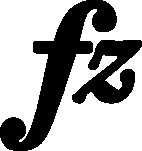



|
b. 322
|
composition: Op. 49, Fantaisie in F minor
..
As in bar 43, category imprint: Differences between sources issues: EE revisions , Errors in FE , 4/4 or 2/2 |
||||||||
|
b. 322
|
composition: Op. 49, Fantaisie in F minor
..
In A Chopin wanted to start the tempo indication of the final section of the Fantasy with the word Molto, which he, however, deleted, hence Allo assai, written at the same height, is inevitably only just in the 2nd half of the bar. Both GE and [FC] (→FE→EE) considered this position to have been forced by the deletion, and the indication was placed at the beginning of the bar, which we adopt to the main text, since it is most probably an accurate interpretation. Nevertheless, as the text of A we provide the literal interpretation, since numerous pianists begin this fragment slower, achieving a fast tempo only just in the 2nd half of the bar (and often much later), which sounds natural in this context. Therefore, Chopin could have assumed this forced shift to be realistic, hence acceptable. category imprint: Differences between sources; Corrections & alterations; Source & stylistic information issues: Corrections in A , GE revisions , Deletions in A , FE revisions , Centrally placed marks |
||||||||
|
b. 322
|
composition: Op. 49, Fantaisie in F minor
..
We introduce the category imprint: Differences between sources; Editorial revisions issues: Authentic corrections of FE |
||||||||
|
b. 322
|
composition: Op. 49, Fantaisie in F minor
..
In A the starting point of the slur encompassing the final passage is not clearly defined. The tip of the slur is between the 1st and the 2nd triplet quavers and is quite high above the notes (above the shorter slur of the separated voice), hence it cannot be said which quaver it concerns. These factors could have made the engraver of GE (who considered this version of notation inaccurate on a larger scale) lead this slur from the 1st note in the bar. The origin of the longer FE slur could be similar, yet other scenarios are likely as well – in this edition the second slur in this bar is missing, hence the copyist (or the engraver) could have assumed that the overlapping A slurs are an inaccurately written down extension to the slur. According to us, the A slur is supposed to run from the 1st triplet quaver assigned to both hands (e category imprint: Differences between sources issues: Inaccuracies in GE , Inaccuracies in FE , Inaccurate slurs in A |
||||||||
|
b. 330
|
composition: Op. 49, Fantaisie in F minor
..
In all editions the dashes marking the range of dim. were led farther than the ones in A (by Chopin). In the case of FE (→EE) the difference is marginal, but in GE the range of diminuendo was extended to the end of the bar. In this context it is of no practical relevance, yet it reveals a certain tendency of the engraver of GE – cf. bars 306-310. category imprint: Differences between sources issues: Inaccuracies in GE , Inaccuracies in FE |

 in
in  in
in  in
in  ), from which the characteristic 6-note motif being the basis for the entire passage begins (cf. bars 188-195). We provide this interpretation of the
), from which the characteristic 6-note motif being the basis for the entire passage begins (cf. bars 188-195). We provide this interpretation of the